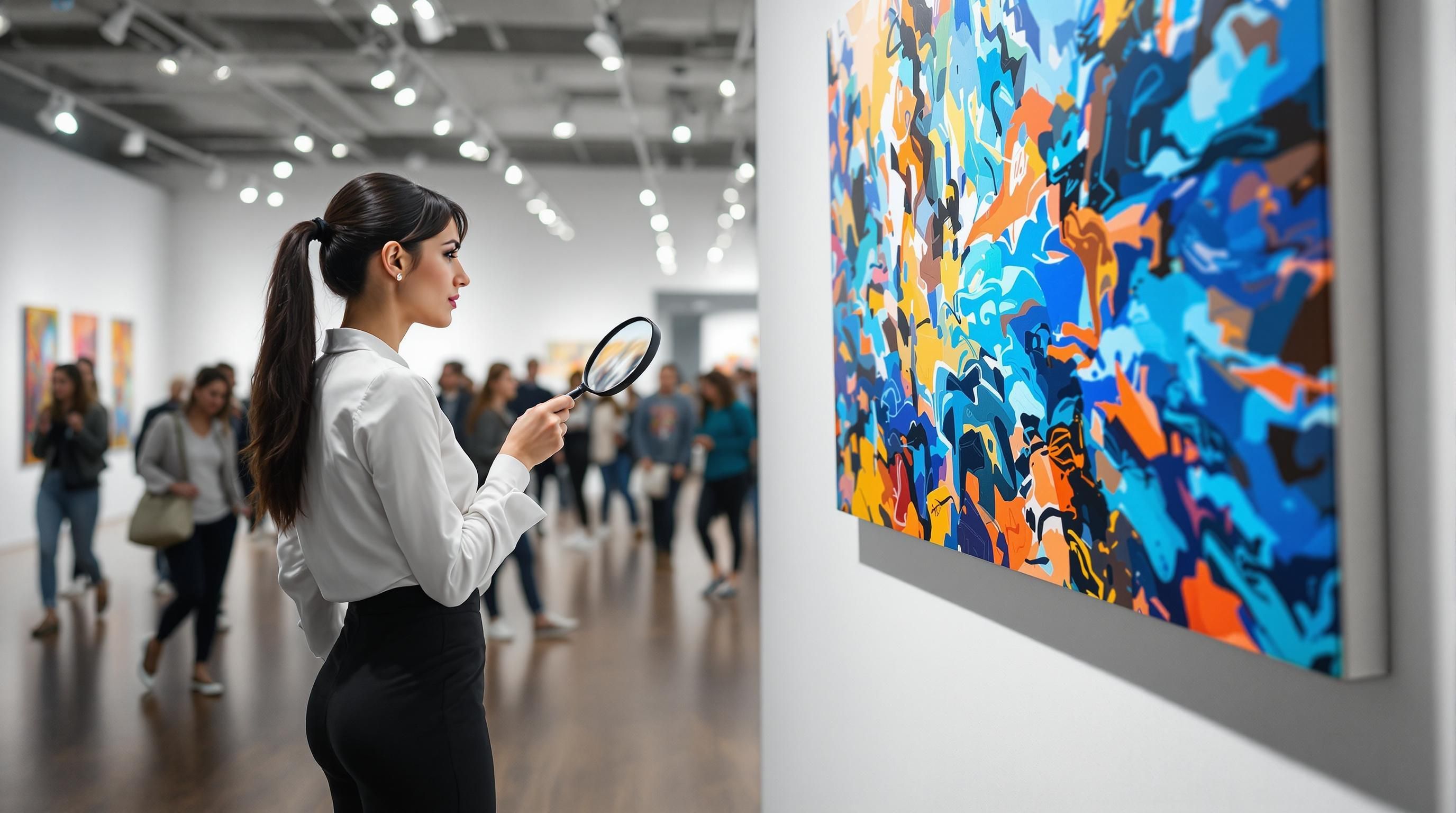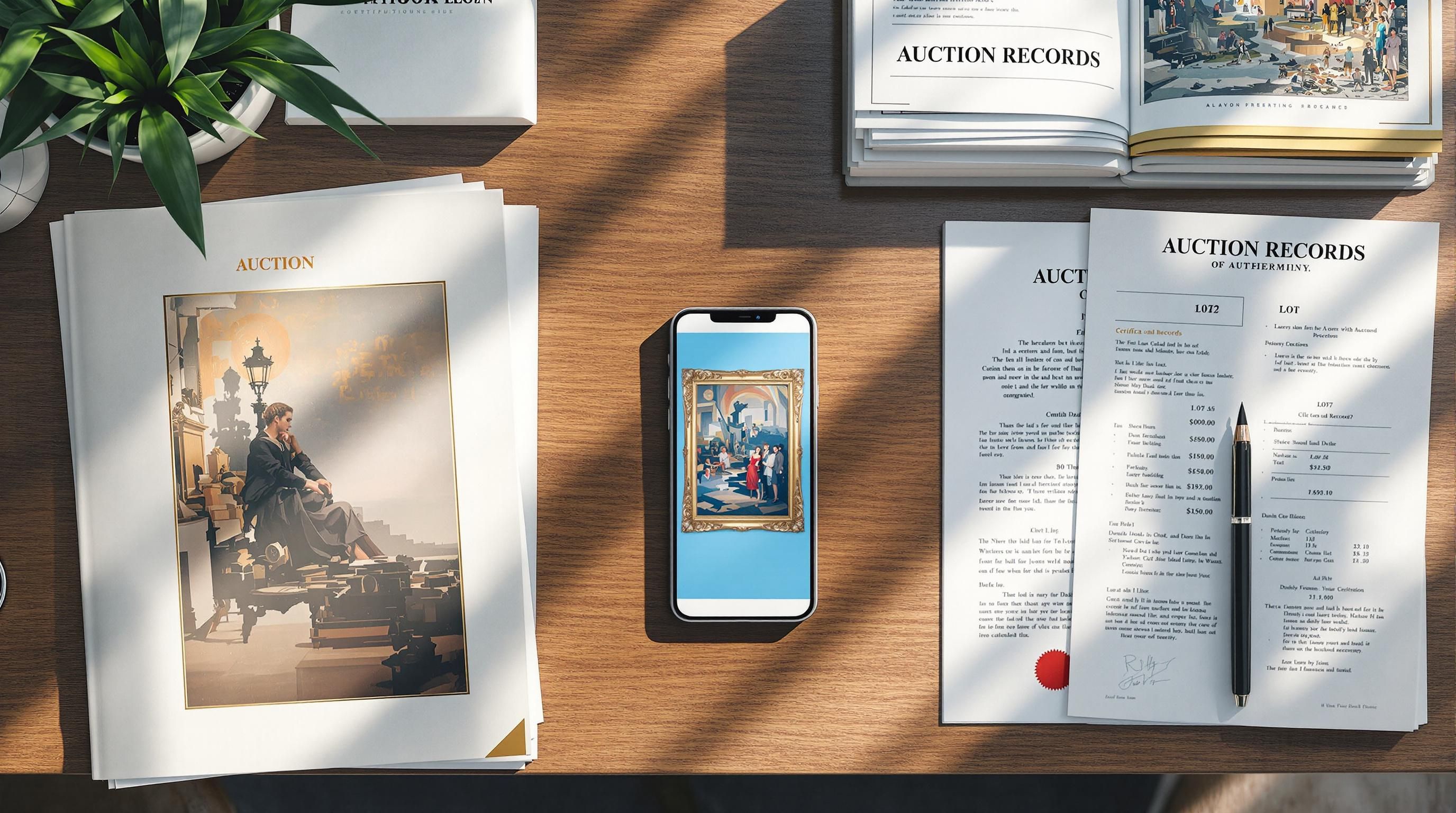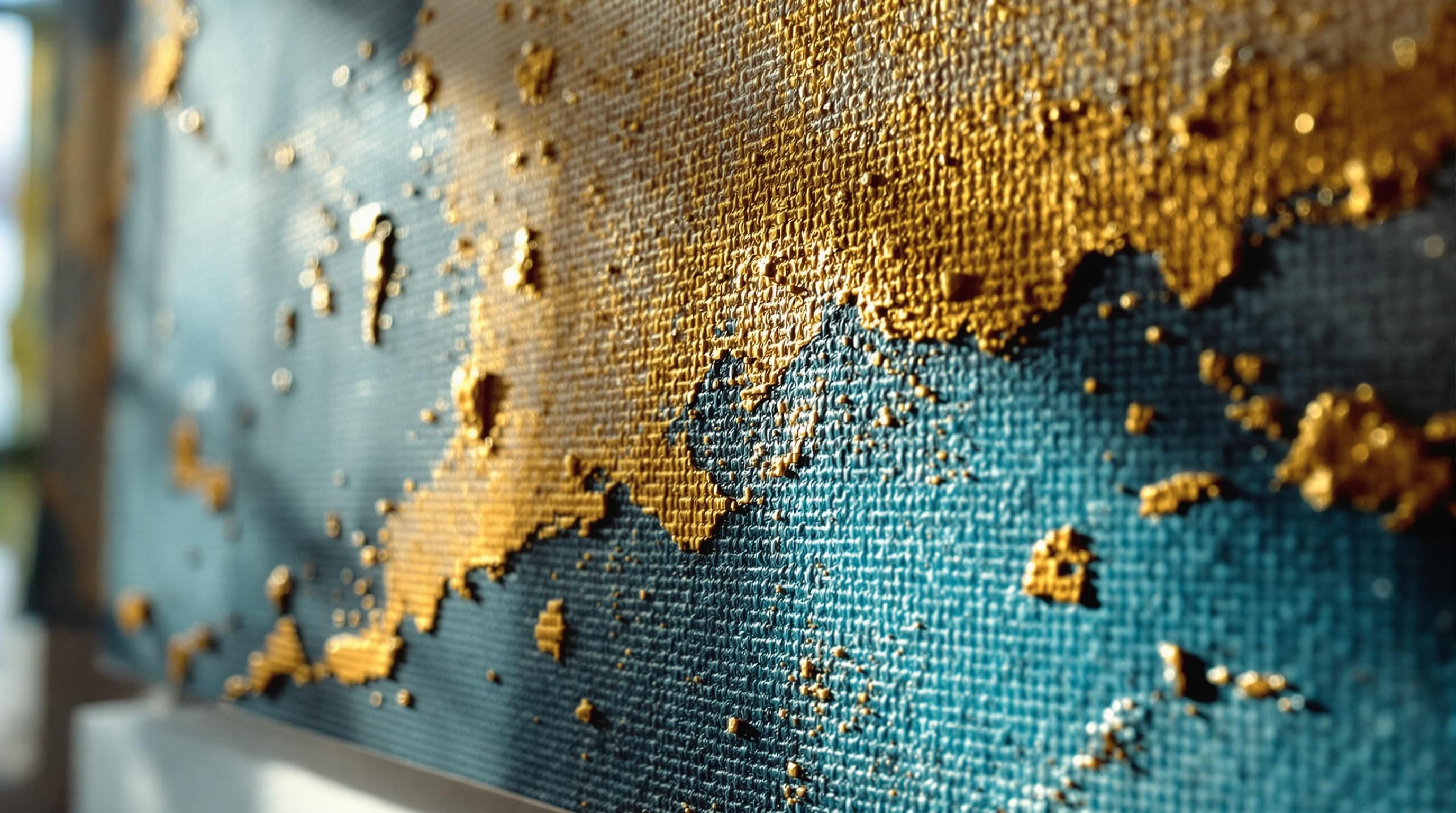Understanding Painting Valuation
Paintings can be valuable for many reasons beyond aesthetic appeal. The artist’s reputation, historical significance, provenance, condition, and market demand all play crucial roles in determining worth. While some paintings might be valuable treasures, others may hold more sentimental than monetary value. The key is knowing how to tell the difference.
Art Market Facts

Key Factors That Determine a Painting’s Value
Several critical elements influence how much your painting might be worth. Understanding these factors can help you make a preliminary assessment before seeking professional evaluation.
1. Authentication and Attribution
The first step in valuing any painting is determining if it’s authentic and correctly attributed to the artist. A painting by a well-known artist will be worth substantially more than one by an unknown creator, even if the styles are similar.
Original vs. Reproduction
To identify if your painting is an original:
- Examine the surface for texture and brushstrokes
- Look at the edges of the canvas or paper for signs of age
- Check for hand-painted details versus mechanical printing patterns
- Verify if there’s a signature that appears to be painted rather than printed
Original Artwork Identification Checklist
Check applicable items to help determine if your painting is an original
<li class="condition-checklist__item">
<input type="checkbox" disabled aria-hidden="true">
<span>Visible brushstrokes or texture on the surface</span>
</li>
<li class="condition-checklist__item">
<input type="checkbox" disabled aria-hidden="true">
<span>Evidence of hand-painted details under magnification</span>
</li>
<li class="condition-checklist__item">
<input type="checkbox" disabled aria-hidden="true">
<span>Canvas edges show age-appropriate wear</span>
</li>
<li class="condition-checklist__item">
<input type="checkbox" disabled aria-hidden="true">
<span>Signature appears to be painted, not printed</span>
</li>
<li class="condition-checklist__item">
<input type="checkbox" disabled aria-hidden="true">
<span>Back of the canvas shows appropriate age</span>
</li>
<li class="condition-checklist__item">
<input type="checkbox" disabled aria-hidden="true">
<span>No dot patterns visible under magnification</span>
</li>
2. Artist Identity and Reputation
The artist’s identity has perhaps the most significant impact on a painting’s value. Established artists with international recognition command higher prices than regional or emerging artists.
According to the Smithsonian American Art Museum, researching the artist is essential for valuation. Check for signatures, monograms, or distinctive styles that can help identify the creator.
3. Condition
A painting’s physical condition dramatically affects its value. Conservation issues like tears, scratches, fading, or previous improper restorations can significantly diminish worth.
Condition Assessment Factors
Painting Condition Assessment
Check for these common condition issues that may affect value
<li class="condition-checklist__item">
<input type="checkbox" disabled aria-hidden="true">
<span>Canvas tears or punctures</span>
</li>
<li class="condition-checklist__item">
<input type="checkbox" disabled aria-hidden="true">
<span>Flaking or cracking paint</span>
</li>
<li class="condition-checklist__item">
<input type="checkbox" disabled aria-hidden="true">
<span>Discoloration or fading</span>
</li>
<li class="condition-checklist__item">
<input type="checkbox" disabled aria-hidden="true">
<span>Evidence of previous restoration</span>
</li>
<li class="condition-checklist__item">
<input type="checkbox" disabled aria-hidden="true">
<span>Water or mold damage</span>
</li>
<li class="condition-checklist__item">
<input type="checkbox" disabled aria-hidden="true">
<span>Frame damage or inappropriate framing</span>
</li>
According to Gray’s Auctioneers, paintings in excellent condition with minimal restoration typically command premium prices, while those requiring significant restoration may sell for 30-60% less.
4. Provenance
Provenance refers to a painting’s ownership history and can significantly impact value. Paintings with well-documented histories, especially those previously owned by notable collectors or institutions, often command higher prices.
How Provenance Affects Value
- Documentation
Proper Documentation
Sales receipts, gallery labels, and certificates of authenticity all help establish provenance and can substantially increase value. - Notable Owners
Previous Notable Ownership
Paintings previously owned by famous collectors, celebrities, or institutions often command premium prices due to their prestigious history. - Exhibition History
Exhibition Records
Documentation showing a painting was featured in significant exhibitions enhances both its historical importance and market value. - Published Works
Publication History
Paintings that appear in art books, catalogs, or scholarly publications typically have better-established authenticity and higher value.
5. Size, Medium, and Subject Matter
Physical characteristics such as size, medium, and subject matter influence value. Larger paintings generally command higher prices than smaller ones, though this isn’t always the case for highly portable, collectible small works.
How Medium Affects Value
Relative value ranking of common painting mediums
</tbody>
</table>
Subject matter also affects value, with certain themes being more desirable in the current market. Historical preferences change over time, affecting comparative values of portraits, landscapes, still lifes, and abstract works.
6. Rarity and Scarcity
Scarcity impacts value significantly. A painting from a limited period in an artist’s career or from a small series will typically be worth more than works from more prolific periods.
As noted by market experts at ArtPrice, when an artist’s works rarely appear on the market, each new offering tends to generate more interest and potentially higher prices.
How to Research Your Painting's Value
Online Research Tools
Several online databases and resources can help you research comparable paintings and their values:
Online Art Valuation Resources
AskART
Comprehensive database of artist information, auction results, and price data for researching your painting's potential value.
FindArtInfo
Free search tool that allows you to compare your artwork with recent auction prices of similar pieces for valuation.
Heritage Auctions Art Value Guide
Resource for checking valuable fine art sold at auction and looking up values in auction archives.
Artprice
World leader in art market information with coverage of over 700,000 artists and millions of auction results.
When using these resources:
- Search for your artist by name
- Look for comparable works (similar size, medium, period, subject)
- Check recent auction results rather than older ones
- Consider the condition differences between your painting and comparable examples
Pricing Formula for Contemporary Artists
For contemporary or emerging artists without established auction records, Artist’s Network recommends a simple formula:
- Multiply the painting’s width by its length to find the total size in square inches
- Multiply that number by a set dollar amount based on the artist’s reputation and career stage
- Add the cost of materials if they are exceptional
For example, a 16×20-inch painting by an emerging artist might be priced at $1.50 per square inch: 16 × 20 = 320 square inches 320 × $1.50 = $480 base price
This formula provides a starting point, but market factors will ultimately determine true value.

Professional Appraisal Options
Art Appraisers and Specialists
Professional art appraisers with credentials from recognized organizations can provide formal valuations for insurance, estate planning, donations, or sale purposes. According to ValueMyStuff, specialized appraisers who focus on specific periods or styles can offer the most accurate assessments.
When seeking an appraiser:
- Look for certifications from recognized organizations like the American Society of Appraisers or the International Society of Appraisers
- Find someone with expertise in your painting’s specific style, period, or artist
- Understand the difference between appraisal types (insurance, fair market, replacement)
- Request references or examples of their previous work
Auction Houses and Galleries
Established auction houses and galleries often provide free evaluation services in hopes of securing consignments. These can be excellent resources, particularly for higher-value works.
Major auction houses like Christie’s and Sotheby’s typically focus on paintings valued above certain thresholds, while regional auction houses may accept more modestly valued works. Similarly, galleries specializing in specific artists or periods might offer evaluation services.
Online Appraisal Services
Several online services offer professional appraisals with quick turnaround times:
Online Appraisal Services
ValueMyStuff
Professional online appraisal service offering expert valuations of paintings within 24-48 hours.
Mearto
Online appraisal platform connecting users with specialists who provide valuations based on submitted photographs.
WorthPoint
Database of sold items with price guide information to help determine value ranges for similar artworks.
These services typically require:
- Clear photographs of the front and back of the painting
- Close-ups of signatures, labels, or distinctive features
- Measurements and condition description
- Any known provenance or history
9 Signs Your Painting May Be Valuable
Value Indicators
Recognizable artist signature - Clearly legible signatures from known artists immediately increase potential value
Quality of execution - Exceptional technical skill and artistic merit suggest higher value
Unusual or rare subject matter - Uncommon subjects or those different from an artist’s usual work may command premium prices
Notable provenance - History of ownership by famous collectors or institutions enhances value
Exhibition history - Inclusion in major exhibitions indicates recognition and importance
Literature references - Mentions in art books or publications establish significance
Original condition - Minimal restoration needs suggest higher quality and greater desirability
Period-appropriate materials - Authentic period materials support authenticity
Gallery or auction house labels - Labels from reputable institutions on the back suggest the work has been vetted previously
Typical Value Ranges by Artist Category
General market value expectations by artist category (individual artists may vary significantly)
| Category | Price | Notes |
|---|---|---|
| Oil on Canvas | Often Highest Value | Traditionally most prestigious and durable medium |
| Acrylic on Canvas | Medium to High Value | Modern medium with good longevity |
| Watercolor | Variable Value | Can be highly valuable but more susceptible to damage |
| Mixed Media | Variable Value | Depends on techniques, materials, and conservation status |
</tbody>
</table>
Common Misconceptions About Art Value
Age Does Not Automatically Equal Value
Many people assume all old paintings are valuable. However, age alone doesn’t determine worth. An excellent contemporary painting by a recognized artist will typically be worth more than an average painting from the 19th century by an unknown artist.
Subjective Appeal vs. Market Value
Personal appreciation for a painting doesn’t necessarily translate to market value. Art markets operate on collective appreciation, artist reputation, and historical significance rather than individual taste.
Frame Value vs. Painting Value
Sometimes an antique frame may be worth more than the painting it contains. Conversely, valuable paintings can be housed in inappropriate or damaged frames that detract from their presentation and potentially their value.
Reproduction Confusion
Mass-produced prints and reproductions are frequently mistaken for original artwork. Austin Galleries emphasizes that determining whether your artwork is an original or reproduction is the first crucial step in valuation.
Next Steps After Valuation
If You Want to Sell
If selling is your objective, consider these options based on the painting’s value:
Auction Houses - For higher-value works, established auction houses provide access to serious collectors
Art Galleries - Galleries may accept works on consignment if they align with their specialization
Online Marketplaces - Platforms like eBay, Artsy, or specialized art marketplaces for mid-range works
Direct Sales - For lower-value works, local art shows, craft fairs, or direct sales through social media
If You Want to Keep It
If you’re keeping your painting, proper care ensures it maintains or increases in value:
Insurance - Obtain appropriate insurance coverage based on the appraised value
Conservation - Address any condition issues through professional conservation
Display - Use proper lighting and environmental controls to prevent damage
Documentation - Maintain all records of appraisals, provenance, and history
For Estate Planning or Donations
For estate planning or charitable donations:
Formal Appraisal - Get an official appraisal from a qualified appraiser that complies with IRS requirements
Authentication - Secure proper authentication documents if available
Legal Consultation - Consult with an attorney specializing in art or estate law for significant pieces
Common Questions About Painting Valuation
How do I lookup the value of a painting?
To research a painting's value, start by consulting price guides available online or at specialized libraries. Resources like AskART, FindArtInfo, and Artprice provide databases of auction results and artist information. The Smithsonian American Art Museum recommends checking specialized university or art museum libraries for comprehensive price guides. Compare your painting to similar works by the same artist, considering size, medium, subject matter, and condition. Remember that online results provide ranges rather than definitive values for your specific piece.
Is there an app that tells you how much a painting is worth?
Yes, several apps can help estimate painting values. Limna is a popular AI-powered app that provides immediate price validation for nearly 800,000 artists. Other options include Magnus Art, which allows you to take a photo of artwork for identification and approximate valuation, and WorthPoint's mobile app for accessing their price database. However, these apps should be considered starting points rather than definitive appraisals, especially for valuable or unusual works that may require expert evaluation.
How do I determine my price for painting?
For artists pricing their own work, a common formula is to multiply the painting's dimensions (height × width) to calculate square inches, then multiply by a dollar amount appropriate for your experience level. Beginning artists might charge $1-2 per square inch, while established artists can command $10-50+ per square inch. Consider factors like your reputation, exhibition history, medium costs, and framing. Compare with similar artists in your market, and adjust prices based on complexity and time invested. Maintain consistency in your pricing strategy to build collector confidence.
How do I value my paintings?
Valuing your paintings involves several steps: First, determine if it's an original or reproduction by examining texture and brushwork. Research the artist through signatures or distinctive styles using resources like AskART or auction databases. Assess the painting's condition, noting any damage or restoration. Consider provenance (ownership history) and look for exhibition labels or documentation. For contemporary works, calculate basic value using the (Height + Width) × Price per linear inch formula as a starting point. For significant works, consult a professional appraiser from organizations like the American Society of Appraisers or International Society of Appraisers.
How can I get my painting appraised for free?
Several options exist for free or low-cost painting appraisals. Many auction houses offer free evaluations hoping you'll consign the work for sale. Some museums hold "evaluation days" where curators provide informal assessments. Art galleries specializing in specific periods or styles may offer opinions on works within their expertise. Online forums like Reddit's r/WhatIsThisPainting can provide preliminary information. For more reliable but inexpensive options, online appraisal services like ValueMyStuff charge modest fees ($10-30) for professional assessments based on photographs.
Does cleaning a painting increase its value?
Cleaning a painting can potentially increase its value if done properly by a professional conservator, especially if dirt or discoloration obscures the true quality of the work. However, improper cleaning can severely damage artwork and dramatically decrease value. Never attempt to clean valuable artwork yourself with household products. Even professional cleaning carries risks, and some collectors and museums prefer that certain patinas remain intact as part of the painting's history. Always consult with a professional art conservator before pursuing any cleaning of potentially valuable artwork.
What makes a painting valuable to collectors?
Several key factors make paintings valuable to collectors: Artist reputation and recognition in the art world; rarity of the work within the artist's oeuvre; historical importance or innovation; provenance showing prestigious previous ownership; exhibition history at notable institutions; literature references in important publications; excellent condition with minimal restoration; aesthetic quality and technical execution; size (larger works by the same artist typically command higher prices); and current market demand for the artist or style. These factors combine to create a painting's market value, with different collectors weighing certain aspects more heavily depending on their collecting goals.
External Resources for Art Valuation
Smithsonian American Art Museum - How Much Is Your Object Worth?
Expert guidance from the Smithsonian on determining artwork value, with tips on research methods and professional appraisal options.
AskART - What's My Art Worth
Comprehensive database for researching artists and auction records to help determine painting values.
FindArtInfo - Art Prices and Appraisal
Free art appraisal tool that helps value fine art by comparing with recent auction prices of similar pieces.
Gray's Auctioneers - 9 Signs Your Painting is Over $1K
Expert insights into recognizing valuable paintings and factors that contribute to higher valuations.
Heritage Auctions - Art Value Guide
Resource for finding the value of fine art through auction archives and price data.
Artprice - Art Market Information
World leader in art market information with databases covering over 700,000 artists and millions of auction results.
Austin Galleries - How to Tell if Your Art is Valuable
Step-by-step guide to determining if your artwork has significant monetary value.
Conclusion
Remember that art markets fluctuate, and values can change over time based on artist reputation, collector interest, and broader economic factors. For valuable works, regular reappraisal every 3-5 years is recommended to ensure insurance coverage remains appropriate.
Whether your painting turns out to be a valuable investment or simply a piece you enjoy for its aesthetic appeal, understanding its place in the art market provides valuable context for appreciating what you own.
Get a Professional Appraisal
Unsure about your item’s value? Our certified experts provide fast, written appraisals you can trust.
- Expert report with photos and comps
- Fast turnaround
- Fixed, upfront pricing
No obligation. Secure upload.
| Category | Price | Notes |
|---|---|---|
| Internationally Recognized Masters | $50,000 - Millions | Major museums, international auction records |
| Established Professional Artists | $5,000 - $50,000 | Gallery representation, consistent sales history |
| Mid-Career Artists | $1,000 - $10,000 | Developing recognition, regional following |
| Emerging Artists | $100 - $2,500 | Early career, limited sales history |
| Decorative Art | $50 - $500 | Value based primarily on decorative appeal |




